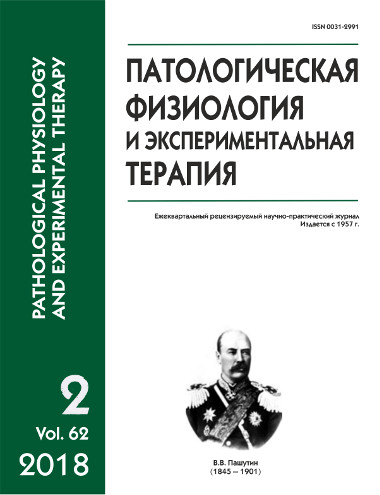Analysis of interrelation between immunoregulatory, neuromediator, and autonomic parameters during formation of psychoactive substance dependence
DOI:
https://doi.org/10.25557/0031-2991.2018.02.4-10Keywords:
antibodies to neurotransmitters, autonomic reactions, aggression, anxiety, psychoactive substance dependenceAbstract
Aim. To investigate the relationship between psychophysiological and immunoregulatory indexes at different stages of forming psychoactive substance dependence. Methods. The study involved 347 subjects, including patients with psychiatric and behavioral disorders caused by psychoactive substances (233 subjects); occasional users of psychoactive substances (28 subjects); and subjects without apparent disease (84 subjects). Immunoglobulins, cortisol, neurotransmitters, and antibodies to neurotransmitters were determined by enzyme-linked immunosorbent assay (ELISA). Subpopulations of immunocompetent cells were identified by flow cytometry. Electrocardiogram, photoplethysmogram, and parameters of skin electrical activity were recorded using the BOSLAB Professional software and hardware complex. Anxiety and aggressiveness were evaluated using the Spielberger-Khanin and Buss-Durkee tests, respectively. Statistical analyses were performed using the Statistica software. The Mann-Whitney test was used for intergroup comparisons. Factorial models were constructed using the principal component method. The models included standardized, normally distributed characteristics. Distribution normality was verified by Kolmogorov-Smirnov and Shapiro-Wilk criteria. Results. The most pronounced changes in neurotransmitter, immune, psychological characteristics, and parameters of the sympathoadrenal system were observed in patients with the psychoactive substance dependence syndrome. Such patients were characterized by increased production of all neurotransmitter antibodies associated with reduced blood levels of dopamine. This is a typical immune imbalance with deficiency of the cell component and stimulation of the humoral component, multidirectional shifts in the sympathoadrenal system, and progressive anxiety and aggression. Consumers of psychoactive substances with adverse consequences associated with a tendency to increase blood levels of serotonin showed an increased relative count of lymphocytes with a shift in the autonomic balance toward the parasympathetic activity. Conclusions. Factorial models indicated that the contribution of changes in the production of neurotransmitter antibodies to the dispersion of model parameters was the greatest. In patients, immunoregulatory, autonomic and psychological reactions changed independently of each other whereas in individuals without apparent disease and occasional users, tighter interrelations of these reactions were observed.Downloads
Published
2018-05-30
Issue
Section
Original research
How to Cite
[1]
2018. Analysis of interrelation between immunoregulatory, neuromediator, and autonomic parameters during formation of psychoactive substance dependence. Patologicheskaya Fiziologiya i Eksperimental’naya Terapiya (Pathological physiology and experimental therapy). 62, 2 (May 2018), 4–10. DOI:https://doi.org/10.25557/0031-2991.2018.02.4-10.






